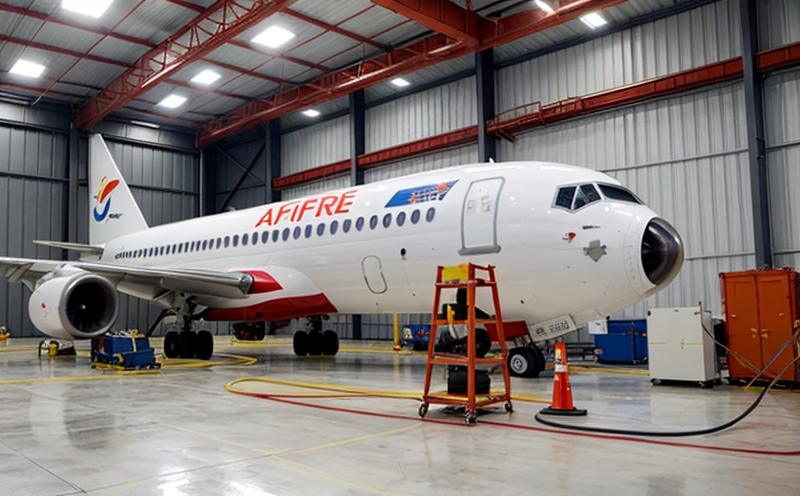Fire Performance Testing of Aircraft Ceiling Panels
The fire performance testing of aircraft ceiling panels is a critical aspect in ensuring aviation safety. As an aerospace fire safety specialist, Eurolab provides comprehensive and precise tests that meet the stringent requirements set by international standards such as ISO 16750-9, EN 45039-2, and ASTM E84.
Aircraft ceiling panels are subject to a variety of environmental and operational conditions. The materials used must be inherently fire retardant or able to withstand extreme temperatures without compromising structural integrity. This testing ensures that the ceiling panels not only meet safety regulations but also provide an environment that is conducive for passenger well-being.
The test setup typically includes simulating real-world scenarios such as electrical faults, smoking materials, and open flames in a controlled laboratory environment. The specimens are exposed to various thermal sources to assess their resistance to ignition and propagation of fire. Testing may be conducted at different environmental conditions including altitude, humidity, and temperature variations.
Preparation of the ceiling panels for testing involves ensuring that all materials used adhere strictly to the specifications outlined in the relevant standards. This includes ensuring uniformity in thickness, density, and composition across all specimens. After preparation, the panels are subjected to rigorous tests which include visual inspections, dimensional checks, and thermal analysis.
The testing apparatus utilized at Eurolab is state-of-the-art, equipped with high-temperature ovens capable of reaching temperatures up to 1050°C (1922°F). These ovens provide a controlled environment where the ceiling panels can be subjected to prolonged exposure to flame and heat. The test setup also includes an oxygen index tester which measures the relative flammability of the materials used in the panels.
The results from these tests are meticulously recorded, analyzed, and reported. Reporting includes detailed descriptions of the test conditions, observed behavior of the specimens, and compliance with relevant standards. Additional reports may include recommendations for material selection or modification to improve fire resistance.
Understanding the importance of this testing is crucial for quality managers, compliance officers, R&D engineers, and procurement teams involved in aerospace projects. By ensuring that the ceiling panels meet the required fire performance criteria, these tests contribute significantly to enhancing overall aircraft safety.
Scope and Methodology
- Test Specimens: Eurolab conducts testing on a variety of ceiling panel materials including composites, foams, and fabrics.
- Environmental Conditions: Testing is conducted under different environmental conditions to simulate real-world scenarios.
- Instruments: Utilizes high-temperature ovens and oxygen index testers for precise measurements.
The first step in the testing process involves preparing the specimens by ensuring they meet specific material specifications. This includes checking for uniformity in thickness, density, and composition.
Following preparation, the panels are exposed to controlled fire environments within high-temperature ovens. The duration of exposure is carefully calibrated based on industry standards.
After testing, visual inspections are conducted to assess any damage or changes in appearance due to heat and flame exposure.
Eurolab Advantages
- Expertise: Eurolab's team of experts has extensive experience in aerospace fire safety testing.
- Compliance: Tests are conducted to meet international standards ensuring regulatory compliance.
- Innovation: Utilizes cutting-edge technology for accurate and reliable testing results.





